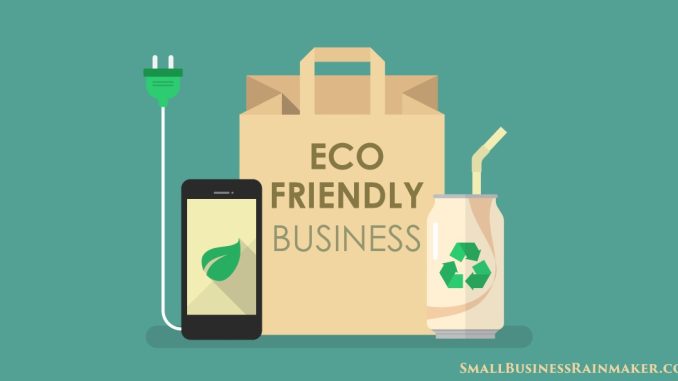
In today’s rapidly evolving business landscape, the call for environmental responsibility has moved from being a niche concern to a mainstream imperative. More than just a trend, making a business environmentally friendly has become essential—not only for ethical reasons but also as a strategic advantage. Customers, investors, and employees increasingly expect companies to demonstrate a genuine commitment to sustainability. The question, then, is how businesses can integrate environmental consciousness into their operations in a meaningful and practical way. This journey begins with understanding that going green is not about a single grand gesture but a series of thoughtful, incremental changes that collectively make a significant impact.
The first step to creating an environmentally friendly business is rethinking resource usage. This involves scrutinizing everything from energy consumption to materials procurement. For example, a company might analyze its electricity bills and realize that simple measures like switching to energy-efficient lighting or installing programmable thermostats can drastically reduce power consumption. Beyond cost savings, such adjustments underscore a commitment to sustainability that resonates well with stakeholders. Consider a local café that replaced incandescent bulbs with LEDs and installed low-flow faucets; these seemingly small changes led not only to lower utility costs but also attracted environmentally conscious patrons who appreciated the café’s efforts.
Material selection is another critical area where businesses can make a tangible difference. In industries ranging from manufacturing to retail, opting for recycled, biodegradable, or sustainably sourced materials can reduce environmental harm substantially. Take the example of a fashion brand that shifted from conventional cotton, which is water-intensive and pesticide-heavy, to organic cotton or hemp alternatives. This switch not only lessens the ecological footprint but also appeals to a growing base of eco-aware consumers. Moreover, packaging is a prime opportunity for environmental innovation. Businesses that move away from single-use plastics toward recyclable or compostable materials often find their brand perception improves, as customers increasingly favor companies that take responsibility for their waste.
Waste management practices also play a pivotal role in greening a business. Many companies are discovering that adopting circular economy principles—where waste is minimized, and materials are reused or repurposed—can be both environmentally and financially rewarding. For instance, a manufacturing firm might implement a program to recycle scrap materials internally or collaborate with other local businesses to repurpose waste products. Similarly, office environments can reduce paper waste by embracing digital documentation and encouraging double-sided printing only when necessary. Not only does this reduce landfill contributions, but it also streamlines operations and cuts expenses.
Transportation and logistics often contribute significantly to a business’s carbon footprint, so re-evaluating these aspects can yield substantial benefits. Companies with delivery operations or supply chains can explore options such as electric vehicles, route optimization software, or partnering with eco-friendly carriers. Even for businesses without a direct logistics component, encouraging remote work or carpooling among employees can lower emissions. A tech company that implemented a flexible work-from-home policy found that it not only reduced its commuting-related carbon emissions but also improved employee satisfaction and productivity—a clear example of how environmental initiatives can dovetail with broader business goals.
An often-overlooked element in making a business environmentally friendly is fostering a culture that prioritizes sustainability. This means engaging employees at all levels, from leadership to entry-level staff, and empowering them to contribute ideas and take ownership of green initiatives. When sustainability is embedded in a company’s values and daily routines, the impact multiplies. For example, an architecture firm might start a “green team” tasked with identifying energy-saving opportunities and promoting awareness. Over time, such cultural integration transforms environmental responsibility from a checkbox item into a dynamic, shared mission.
Transparency and communication also matter immensely in the journey toward sustainability. Businesses that openly share their goals, progress, and challenges around environmental practices build trust with customers, investors, and partners. Authenticity is key here—consumers are savvy and can easily detect greenwashing, where companies exaggerate or fabricate their environmental credentials. A genuine approach might involve publishing annual sustainability reports, participating in third-party certifications, or simply telling the story of your company’s efforts through blogs and social media. This transparency not only holds the business accountable but also inspires others to join the movement toward greener practices.
Financial considerations inevitably arise when businesses contemplate environmentally friendly transformations. While some sustainable changes require upfront investment—such as installing solar panels or purchasing eco-friendly equipment—the long-term savings often justify the expense. Moreover, many governments and organizations offer incentives, grants, or tax breaks to support green business initiatives. Beyond direct financial benefits, embracing sustainability can open doors to new markets, partnerships, and customer segments. Increasingly, investors prioritize environmental, social, and governance (ESG) factors in their decisions, meaning that eco-conscious companies are better positioned to attract capital.
Ultimately, making your business environmentally friendly is a multifaceted process that demands a blend of strategy, creativity, and commitment. It’s about understanding your unique impact, seeking out opportunities for improvement, and embracing sustainability as a core principle rather than a peripheral concern. Businesses that navigate this path thoughtfully not only contribute positively to the planet but also build resilience, foster innovation, and connect more deeply with their stakeholders. In a world where environmental challenges are intensifying, companies that act decisively to reduce their footprint will not only thrive but also help shape a more sustainable future for all.

Leave a Reply